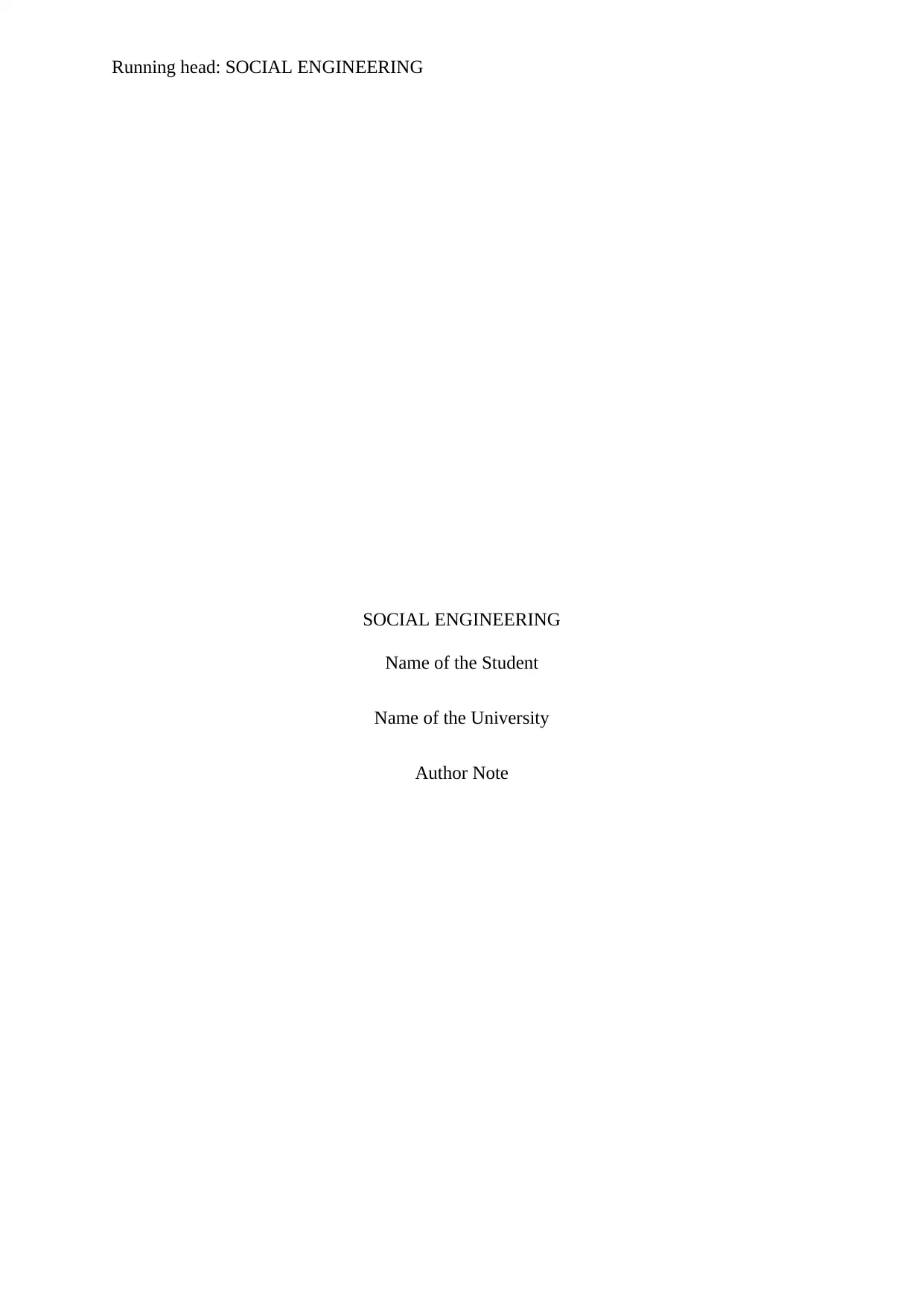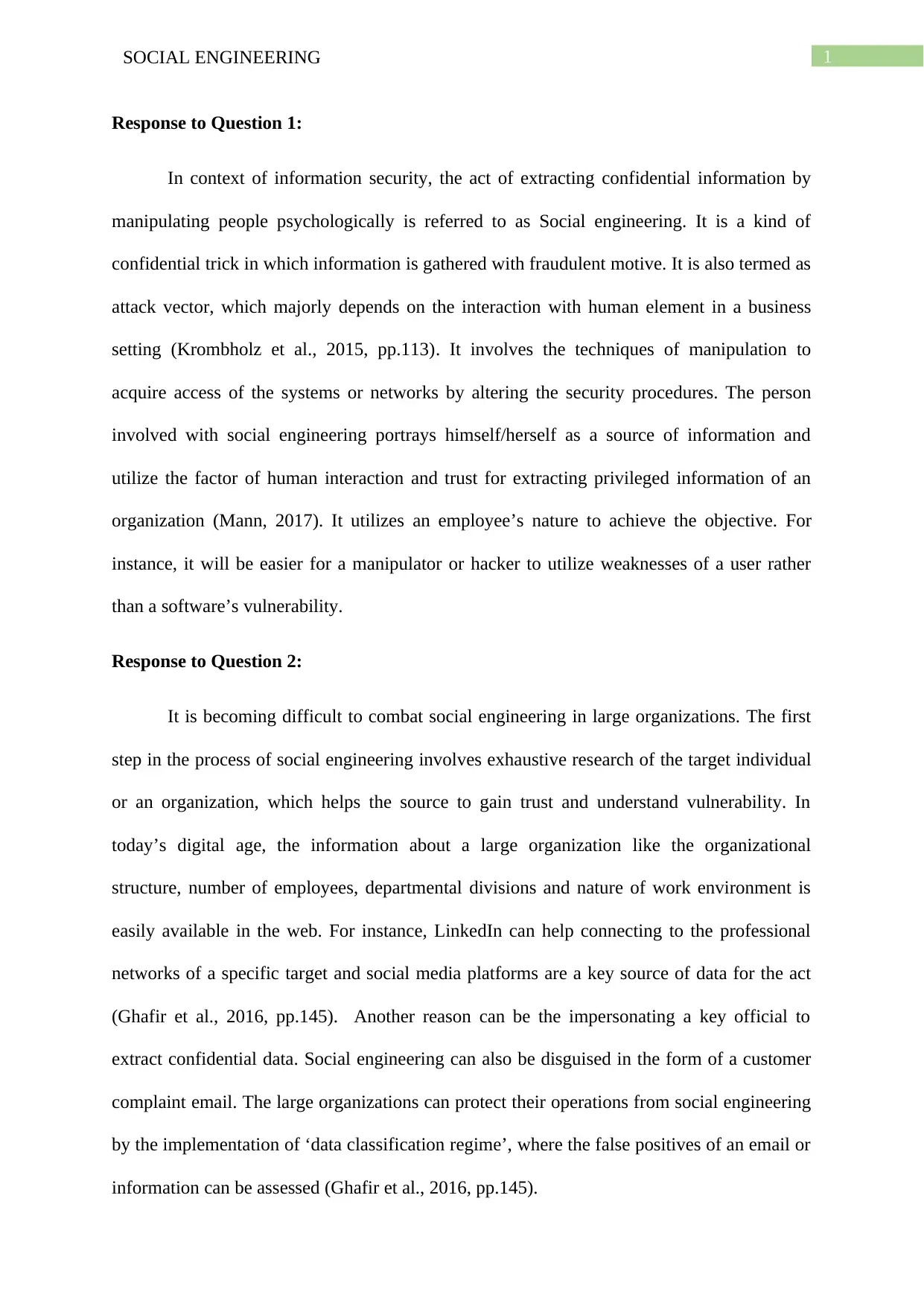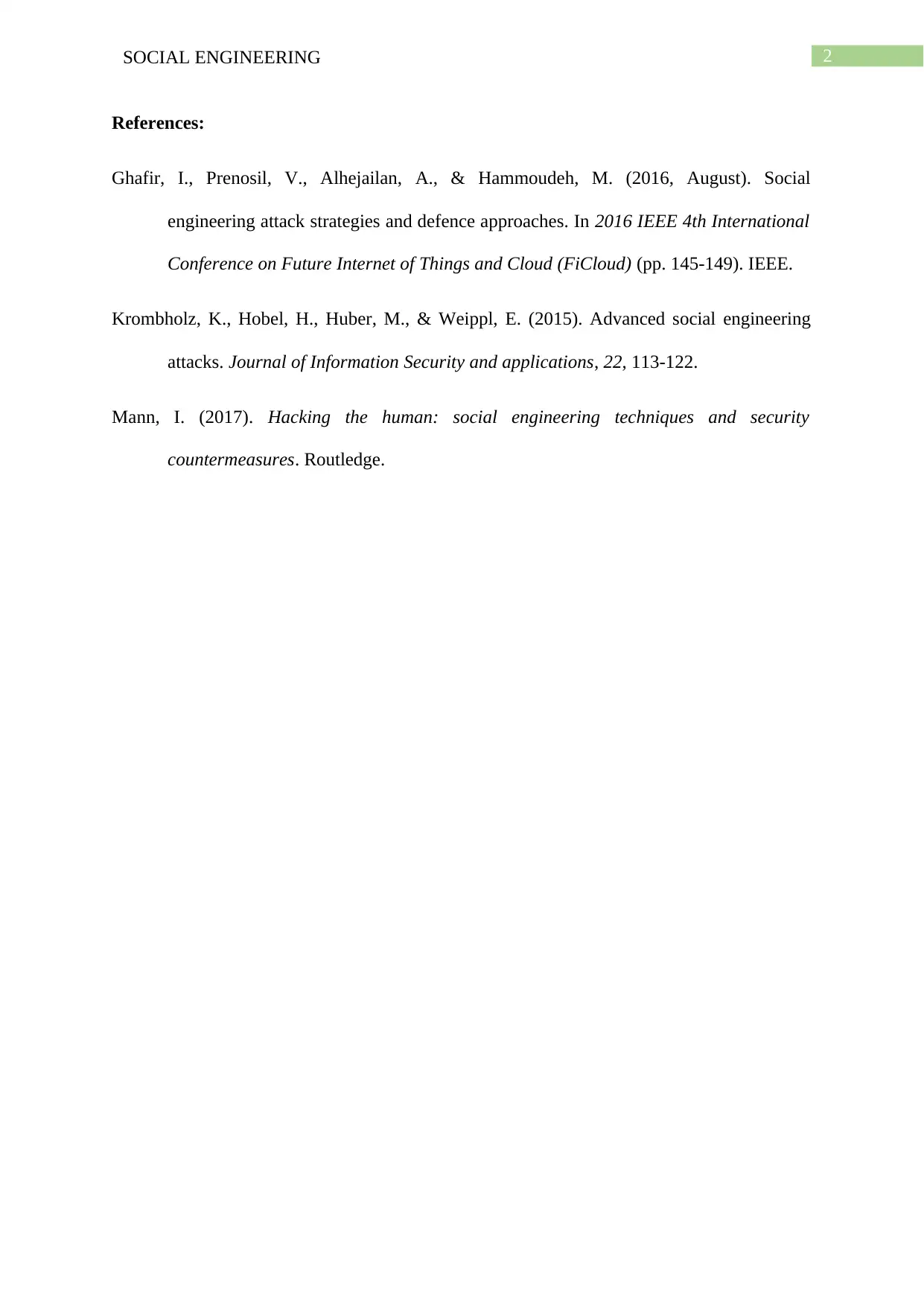Social Engineering Report: Strategies, Attacks, and Defenses
VerifiedAdded on 2023/04/24
|3
|497
|266
Report
AI Summary
This report delves into the realm of social engineering within the context of information security. It begins by defining social engineering as a method of manipulating individuals to acquire confidential information, emphasizing its role as an attack vector that exploits human interaction. The report then explores the challenges of combating social engineering in large organizations, highlighting the significance of preliminary research on targets and the utilization of online platforms like LinkedIn for gathering information. Furthermore, it discusses the impersonation of key officials and the use of customer complaint emails as tactics. The report suggests implementing a 'data classification regime' to identify false positives in emails and protect against social engineering attacks. The report provides references to relevant academic papers and journals, including the use of social media platforms and the utilization of human vulnerabilities.
1 out of 3









![[object Object]](/_next/static/media/star-bottom.7253800d.svg)